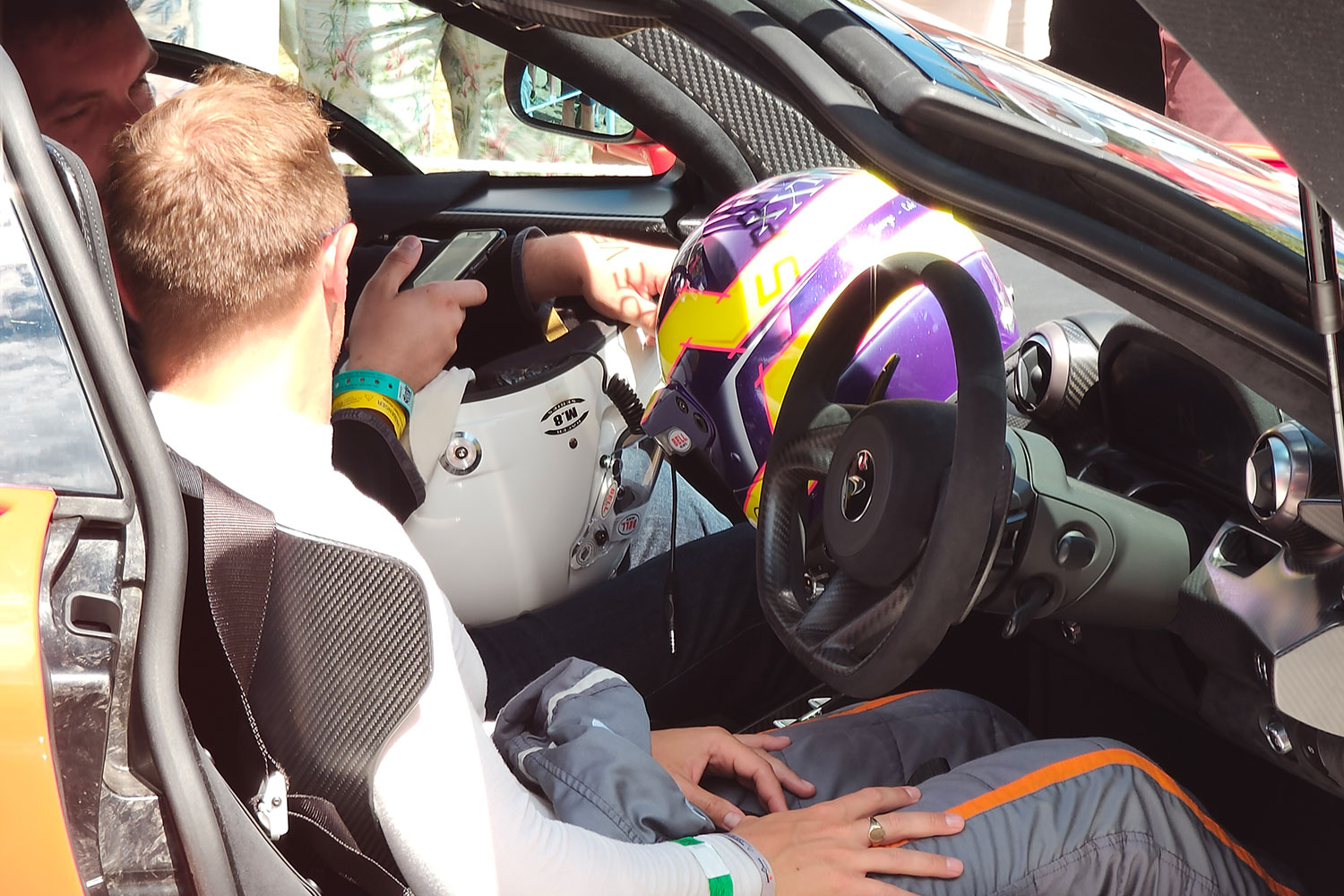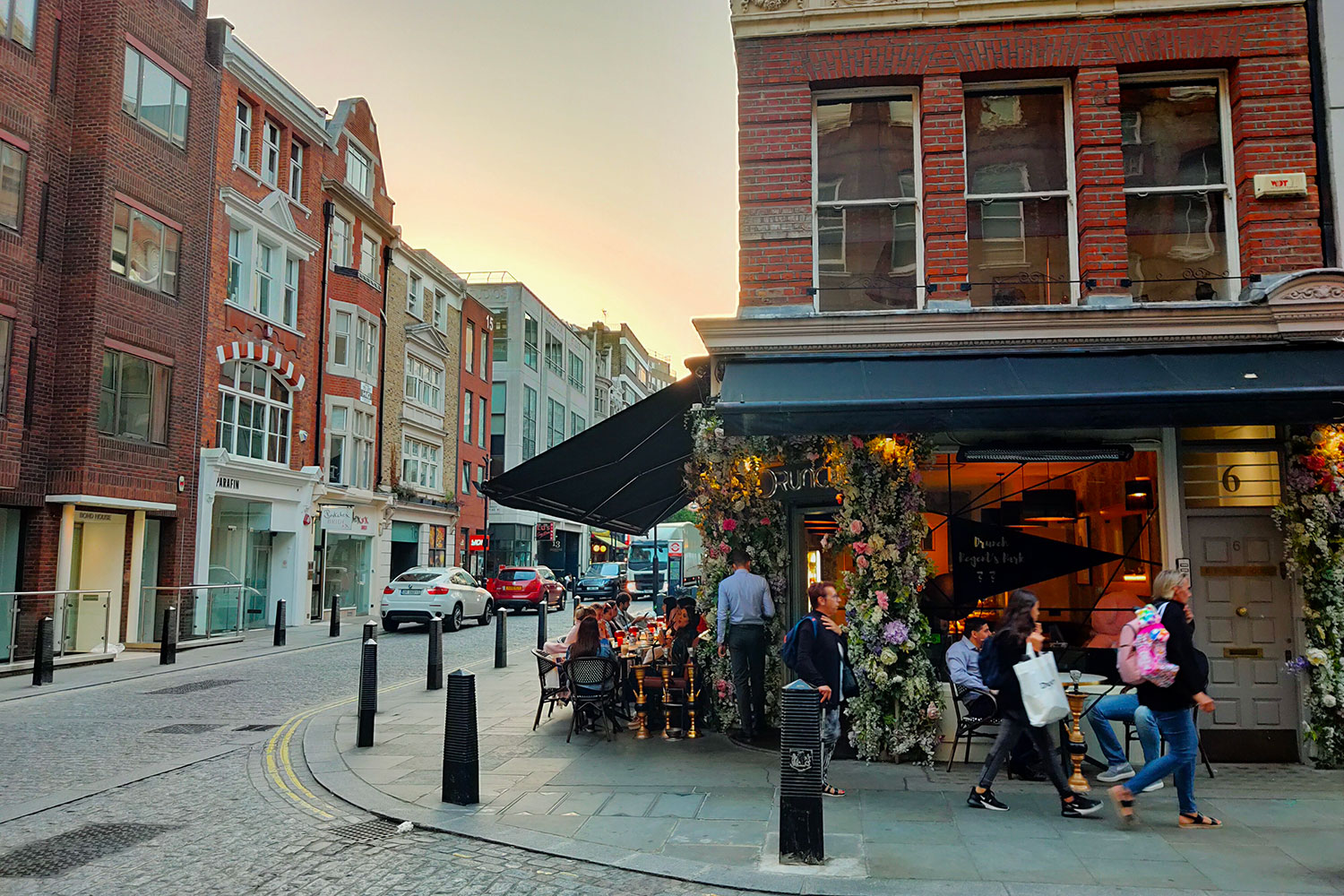“The Oppo Reno 10x Zoom has a camera you will want to use, and software you won’t.”
- Great, versatile camera
- Strong performance
- Long battery life
- Competitive price
- Poor software experience
- No water resistance
- Heavy and bulky
Oppo outdid itself with the design of the Find X, which remains one of the most stunning flagship phones ever made, and while the Reno 10x Zoom isn’t quite as dazzling, it’s still an eye-catching smartphone, especially at a price that undercuts much of the competition.
But beauty is often only skin-deep, and the software experience on the Reno 10x is unacceptable at any price. As the frustrations mount, the Reno ownership experience starts to take a downturn, but the camera does help to balance things out. Here’s why Oppo’s latest is a bit of a gamble.
Chunky design
This is one big, thick, chunk of a phone. It’s a 9.4mm thick, 210 gram slab of Gorilla Glass and aluminum, which on the back has a very cool frosted look broken only by a shiny sliver down the center to show the brand name and highlight the camera lenses. Our review model is in an unusual green color, but a more simple black model is also available. The lenses are flush to the body, unlike the Huawei P30 Pro, the iPhone XS Max, and the OnePlus 7 Pro — all major challengers to the Reno 10x Zoom.
The frosted glass has a warm, soft touch to it and is very tactile; and while the main body is slippery, the shiny center line adds some grip. A high quality case designed to fit the phone is included in the box, but it’s a little annoying. The Reno 10x Zoom has a special pop-up camera that takes up the majority of the phone’s top, necessitating the case to be open there. The bottom is closed, and I was forever holding the phone the wrong way round, as most cases are open at the bottom for charger access.
How special is the pop-up camera? It’s like a shark fin, raising out of the Reno as if it’s scything through the ocean. It looks so unique that you’ll want to show everyone. It’s clever too, as the front has the selfie camera while on the back is the main camera’s flash unit. The camera can be used for face unlock, but it’s not as good as the OnePlus 7 Pro or the Asus Zenfone 6, because it doesn’t intelligently open and close.
Color OS 6 on the Reno 10x Zoom feels half-finished and out to annoy.
I often accidentally activated it in my pocket, or just as I was about to put the phone away, forcing me to exit the camera app or to cancel the unlocking process. This raises concerns over the shark fin section getting knocked or broken, but it does disappear back in the body automatically in the event of a drop when you’ve got the camera app open. It’s a shame this doesn’t happen from the lock screen too.
The overall Reno 10x Zoom package feels expensive, looks great, and the design has been well thought-out. The strange little nubbin on the rear panel is there to keep the camera lenses from getting scratched if you put the phone down face-up, for example. However, the massive weight makes it tiring to hold for long periods, and it’s always noticeable in your pocket.
Software and screen
If the weight of the Reno 10x Zoom tires you out, then it’ll sometimes be a blessed relief to put the phone down, because the software and user experience can irritate. First the good stuff — it’s Android 9.0 Pie with the June 2019 Android Security Patch installed, and it’s never slow or sluggish. Now for the bad, it has Oppo’s Color OS 6 over the top, more bloatware than the end credits of a Marvel movie, and bugs that made me want to stop using the phone entirely.
Color OS version 6 is better than version 5, but still a world away from Samsung’s user interface, stock Android, or even Huawei’s EMUI. How annoying is it? Example: Apps are spread across multiple home screens, but there is an App Drawer setting that greatly improves the look and usability. When it’s selected, Color OS still leaves all the app icons on the home screens so you have to remove them all in a long-winded clean up process. Other interfaces don’t do this, so why does Color OS?
There are masses of pre-installed apps, some of which are not apps but hot-linked folders to online portals, and a wide variety of duplicates and questionable “services.” Oppo includes its own app store, which generates plenty of ads that appear mostly as notifications. I’ve also experienced connection problems on the phone, where periods of inactivity (such as overnight) or reconnecting after being out of Wi-Fi range for a while causes the Wi-Fi to hang, which only a restart cures. This, along with some ugly design choices — the ridiculously large buttons for settings in the notification shade, for example — the largely useless Smart Assistant that’s to the left of the home screen, and the clumsy “close all apps” system that never seems to close any apps at all, makes Color OS 6 on the Reno 10x Zoom feel half-finished and out to annoy.
OLED display
You look at the software on a big 6.6-inch OLED screen with a 2,340 x 1,080 pixel resolution. While lower in resolution than some other flagship Android phones, you won’t notice much of a difference — it’s crisp, colorful, and sharp.
But the screen is not good in strong sunlight unless the brightness is turned up to maximum, and the auto-brightness is a little dimwitted, taking too long to adjust. When it does, it’s never quite enough to view comfortably. I do love the no-notch look though, which makes playing games and watching movies much more immersive.
Zoom camera
The Reno’s clumsy name refers to the camera’s special feature — a 10x zoom, meaning Oppo’s gunning for the Huawei P30 Pro. Oppo pushes the digital zoom feature even further than Huawei, as it reaches 60x compared to the P30 Pro’s 50x. You won’t want to use 60x very often though, as it’s all pixels and no detail.
A button on the viewfinder cycles through a 2x, 6x, and a 10x zoom level. Optical zoom is 5x, while everything else is a hybrid, so why isn’t there quick access to 5x? The 6x setting adds some hybrid features, and appeared to make shots less “wobbly” at this level of zoom. There is no obvious difference in quality.
There is a separate button to activate the wide-angle camera, or you can use the button to scroll through all zoom levels. Switching between them is fast, and is accompanied by a pleasing transition as you move between zoom levels. At 6x the quality is good. In the right light, photos look superb and full of color, but on 10x especially when lighting is challenging, the color reproduction is muted. The 2x level is great, with lovely contrast and just the right amount of saturation to make pictures pop.
Each photo, regardless of the lens or zoom level you use, has a welcome consistency. This makes it easier to take photos you like, without contemplating which lens will take the best shot. The 13-megapixel f/3.0 telephoto lens is joined by two other lenses — a 48-megapixel f/1.7 main lens, and an 8-megapixel f/2.2 ultra wide lens, both of which have optical image stabilization with added electronic stabilization in video mode. The total focal length is 16mm to 160mm, the same as the Huawei P30 Pro. The selfie camera has 16-megapixels.
Get an idea for a photo, and there’s a great chance the Reno 10x Zoom has a lens to take it.
The wide-angle camera is hurt by the low megapixel count, and the quality suffers, especially when compared directly with the Huawei P30 Pro’s 20-megapixel wide-angle camera. The Reno 10x Zoom defaults to 12-megapixels and uses pixel-binning to collect more light, but a 48-megapixel mode can be selected under the camera app’s settings. I couldn’t see any differences between the two on the phone’s screen, but the 48-megapixel shots will be better if you’re inclined to print out large scale versions.
Night mode is good too, pulling in plenty of light. But like the P30 Pro, the camera is strong in low light without Night mode. With Night activated, the images are still atmospheric, without straying into the overly-brightened images we’ve seen with some night modes. Finally, selfies are good with a highly-adjustable beauty mode that’s as intrusive as you want it to be. It’s great to have such control, as many people only want a little smoothing to deal with odd lighting. The Reno 10x Zoom provides it, with a capable portrait mode, and some visually pleasing filters too.
I love the versatility of the Reno’s camera and this kind of lens setup. Get an idea for a photo, and there’s a great chance the Reno 10x Zoom has a lens to take it, regardless of the time of day.
Performance and battery
The Oppo Reno 10x Zoom has a Snapdragon 855 processor inside, 8GB of RAM, and there’s 256GB of storage space. The SIM tray has space for a MicroSD card or a second SIM; but not both at the same time. Here are the benchmark results:
- AnTuTu 3DBench: 356,738
- Geekbench 4 CPU: 3,046 single-core; 10,783 multi-core
- 3DMark Sling Shot Extreme: 4,944 (Vulkan)
The AnTuTu score is ahead of the Galaxy S10 and the iPhone XS, along with the Huawei P30 Pro, but is behind the OnePlus 7 Pro and the Xiaomi Mi 9. The 3DMark score is superb too, beating everything apart from the Red Magic 3 gaming phone, but the Geekbench scores are similar to the Galaxy S10 and OnePlus 7 Pro.
Despite the software being annoying, it has not presented any performance problems, and is speedy, smooth, and mostly stable outside of the odd connection problems. All apps I tried ran without incident, and the hardware makes easy work of even the most graphically-intensive games.
A big 4,065mAh battery is inside, and with moderate use it should last a couple of working days. But with heavy use — games, watching video, and normal use throughout the day — it’ll be down to 20% before going to bed. The good news is it definitely won’t give-up before the day is out. The large capacity battery makes the Reno reliable and easy to live with.
In the box is an Oppo 20w VOOC charger, which isn’t as fast to charge as the Super VOOC system the company includes with some of the Find X models. Here, the phone recharges to full in about 90 minutes. There is no wireless charging.
Putting it through a YouTube video test, playing a 1080p video at full brightness over Wi-Fi until the battery ran out, the Oppo Reno managed a respectable 13 hours 55 minutes. That’s similar to the Galaxy S10 Plus, which ran a little over 14 hours.
Security and audio
I’ve already complained about the face unlock system elsewhere in the review, because while it works, the camera will often pop-up at inopportune moments. It is an option that’s not activated as standard, leaving you to use the in-display fingerprint sensor. Here it’s as reliable as the P30 Pro’s and the OnePlus 7 Pro, with an 8 or 9 out of 10 hit rate. Certainly not a disaster, so why fall back on the face unlock? It’s way easier to use with one hand, especially as the phone is heavy.

The Reno does not have a 3.5mm headphone jack, but it does have dual speakers. Sound quality isn’t great, but it does get loud. On the software side, the Reno has Dolby Atmos but this only works with wired headphones or the built-in speakers. Using a set of Bluetooth headphones with the Reno revealed the sound quality is acceptable, but a little soft and lacking in character and depth.
Price, availability, and warranty
You can’t buy the Oppo Reno 10x Zoom officially in the U.S., but it is for sale in the U.K., Europe, China, and many other regions. It’s 700 British pounds, which converts over to $880, or 800 euros. It was released at the beginning of June and can be purchased through Carphone Warehouse with or without a contract, and retail partners including Laptops Direct.
Oppo provides a two-year warranty on the device and battery, but this does not cover accidental damage, plus it has an interesting international warranty on the Reno 10x Zoom too. This operates wherever you are in the world if the phone goes wrong. Handy if you’re traveling.
If you’re planning to buy a Reno 10x Zoom, make sure you actually buy the 10x Zoom version. Oppo also makes a standard Reno phone, which has very different specs — no zoom camera and lesser performance — for a lower price. It costs 450 British pounds ($566), so if you see what you think is a bargain Reno, just remember it may not be the one you want. On the same subject, the Reno 10x Zoom is available with a 5G modem on the EE network in the U.K..
Our Take
The Oppo Reno 10x Zoom’s camera is excellent, with strong abilities and some fun features. But the package is let down by its software, which frustrates more than it delights. The battery compensates for this, but the weight of the phone means you’ll always know it’s with you.
Is there a better alternative?
Yes. The Huawei P30 Pro is the Reno 10x Zoom’s direct rival, and it’s the better purchase. The software is more reliable and user-friendly, the camera has even more features and takes even better pictures, plus the phone is lighter and more durable. However, Huawei’s ongoing situation in the U.S. is a cause for concern, and while the P30 Pro is a phone the company said it will keep issuing Android updates for, you may want to hold off until August.
The other big rival for the Reno 10x Zoom is the OnePlus 7 Pro. It can’t match the 10x zoom feature, and it’s also a heavy little beast, but the screen is an absolute winner, and the camera generally is better than any OnePlus setup before it. The software is also much better than the Reno’s. Finally, it’s cheaper, and sold in the U.S..
Then there are the old faithful: The Pixel 3 XL and the Samsung Galaxy S10 Plus are both excellent, although the Pixel 4 will come in the not too distant future along with the next iPhone too. If you want something a little different, the Asus Zenfone 6 has its unusual flip camera, similar performance, and again, better software than the Reno.
How long will it last?
Durability is a downside of the shark fin camera, as the Reno 10x Zoom does not have any water or dust resistance. The glass is Gorilla Glass 6 all over, which should help it survive small drops, and the case inside the box is sturdy and even has a felt lining for added protection. It’s advisable to use it.
The phone has the latest Qualcomm Snapdragon processor, and if you pick the 5G version, it’s as future-proofed in terms of hardware as you can get at the moment. However, Oppo’s software update schedule is a mystery. Oddly, the standard Reno but not the 10x Zoom is part of Google’s Android Q beta program, but this does bode well for the next version of the OS to arrive. It’s just the timeline that’s not clear
Should you buy it?
No. The Reno 10x Zoom isn’t a bad phone, doesn’t have a bad camera, and doesn’t wheeze along like it’s powered by a small rodent. In fact, these aspects of the phone are all excellent. It does, however, have problematic software. While this is the only major drawback, it’s a serious one. We interact with the software every time we pick up the phone, and it needs to be usable, reliable, and never annoying. That’s not always the case with Color OS. It’s not the first time this has been a drawback with an Oppo phone, but this time the stakes are much higher.





















